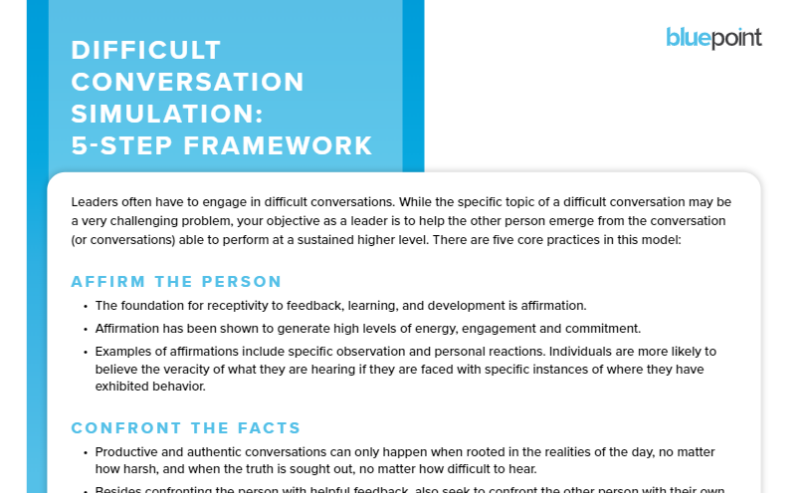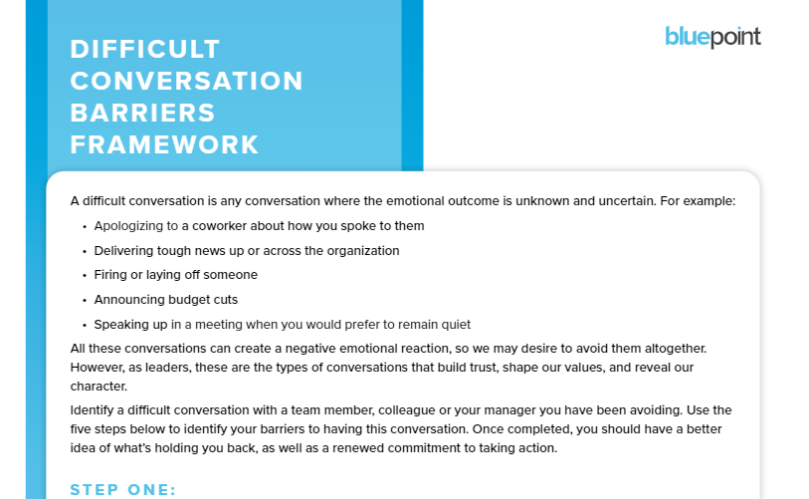Although it’s not always easy, and managers don’t look forward to it, feedback helps your team members grow and develop. By answering questions like “In what areas are you performing well, and where can you improve to unlock your full potential?” employees are motivated to correct potential faults in positive ways.
So how exactly can managers provide effective feedback in a constructive conversation? It’s critical for managers to engage in two types of feedback conversations:
- Constructive
- Appreciative
Constructive conversations are often put on the back burner, but they are some of the most important conversations managers have with their team members.
Organizations rife with confusion and ambiguity typically have leaders and managers who avoid constructive feedback like the plague. These leaders keep themselves distracted with all kinds of busy work rather than engaging in the conversations that may matter most: constructive feedback.
Because constructive feedback often involves differing perspectives, emotional spikes, and critical career decisions, it’s also the most difficult task for managers—and one often avoided because of the perceived emotional carnage that will result. However, when these conversations are done in the right way, constructive feedback creates mutual respect and understanding and increases commitment and engagement.
Appreciative conversations are equally as important but slightly easier and less stressful for managers. Communicating appreciation for what employees are doing correctly will encourage them to keep growing and developing in those areas and shows their work isn’t going unnoticed.
Before you begin any feedback conversation with a team member, though, keep these three points in mind:
- Check your intentions. Before giving feedback, ask yourself why you’re giving the feedback. Is it to help the other person, or are you giving it for some other reason? The problem with most constructive feedback situations is that the leader comes bearing negative judgments (i.e., blaming, criticizing, etc.) and an agenda directed at fixing the other person rather than an attitude of service. When employees recognize that feedback is given with positive intention, they are much more receptive to it.
- Consider the outcome. Will the outcome of your feedback help the organization in some way? Will it help the individual grow and learn? Brainstorm how you can deliver the feedback in a way that helps the receiver recognize its potential positive outcomes.
- Focus on behavior. Provide specific feedback on the behavior and actions you observed rather than on the person’s characteristics or makeup. What did you notice? What was the impact of the person’s actions on you? On others?
Successful managers confront others not to fix them but out of genuine concern. The goal of constructive conversations is to provide information that will be valuable to team members to help them perform at a higher level.
Constructive conversations are integral parts of managing performance and leading others. Feedback is one of the most powerful influences on performance, learning, and career development.
About The Author

Christina Beaulne
Christina is a Senior Instructional Designer for Bluepoint. She is responsible for creating curriculum to help leaders develop their coaching skills to not only achieve personal and organizational goals, but also to create extraordinary impact in the lives of employees and the community at large.
Related Resources

7 Leadership Strategies to Combat Change Fatigue
leading-change

Difficult Conversation Simulation: 5-Step Framework
communication

Difficult Conversation Barriers Framework
communication
Subscribe to newsletter
Subscribe to our newsletter today and receive innovative, insightful and thought provoking resources (videos, webinars and articles) all effective tools for developing leadership talent.
This is a member-only resource. Contact sales at info@bluepointleadership.com for information on Corporate Membership or learn more here: Learn More
This is a member-only resource. Contact sales at info@bluepointleadership.com for information on Corporate Membership or learn more here: Learn More


